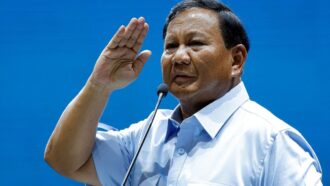Try Adsterra Earnings, it’s 100% Authentic to make money more and more.

Homi Jehangir Bhabha, often regarded as the ‘Father of Indian Nuclear Science’, was a visionary physicist, engineer and administrator, who played a pivotal role in shaping India’s atomic energy programme. Born on October 30, 1909, in a prominent Parsi family in Bombay (now Mumbai), Bhabha’s life was dedicated to scientific discovery and national progress.
His father, Jehangir Bhabha, was a well-known lawyer, and his mother, Meheren, came from an influential family. Homi’s family encouraged his intellectual pursuits, fostering his early interest in science and the arts. He received his early education at the Cathedral and John Connon School and later attended Elphinstone College and the Royal Institute of Science, Bombay.
Bhabha’s passion for physics led him to pursue higher studies at the University of Cambridge, England, where he initially enrolled to study mechanical engineering to fulfil his family’s wishes. However, his true calling lay in theoretical physics, and he soon switched to the subject, earning his doctorate in 1934 under the guidance of Nobel laureate Paul Dirac.
Advertisement
During his time at Cambridge, Bhabha made significant contributions to quantum mechanics and cosmic ray research. His work on the theory of electron-positron scattering, known as ‘Bhabha Scattering’, gained him international recognition. The outbreak of World War II in 1939 brought Bhabha back to India, where he joined the Indian Institute of Science (IISc) in Bangalore under the mentorship of Nobel laureate CV Raman. Here, Bhabha began developing the foundations of India’s nuclear programme, focusing on cosmic rays and nuclear physics.
Recognising the potential of atomic energy for national development, Bhabha wrote to the then Prime Minister Jawaharlal Nehru, emphasising the need for a dedicated nuclear programme. This led to the establishment of the Tata Institute of Fundamental Research (TIFR) in 1945 in Mumbai, with Bhabha as its founding director.
Advertisement
In 1954, Bhabha founded the Atomic Energy Establishment, Trombay (AEET), which was later renamed the Bhabha Atomic Research Centre (BARC) in his honour. Under his leadership, India’s nuclear research progressed rapidly, with the focus on utilising atomic energy for peaceful purposes, such as electricity generation, medical research and agriculture.
Bhabha was a prominent figure in the global scientific community. He represented India at various international forums, including the United Nations, and advocated for the peaceful use of nuclear energy. His vision and diplomacy helped establish India’s credibility in nuclear research and laid the groundwork for the country’s self-reliance in atomic energy.
Homi Bhabha’s life was tragically cut short on January 24, 1966, when Air India Flight 101 crashed near Mont Blanc in the Alps. The circumstances of the crash remain controversial, with theories suggesting sabotage, though no conclusive evidence exists.
Bhabha’s contributions to science and nation-building remain unparalleled. Institutions like TIFR, BARC and India’s nuclear reactors stand as a testament to his vision. His efforts not only propelled India into the atomic age but also inspired generations of scientists.
Bhabha’s legacy as a pioneer of nuclear science and a champion of innovation continues to shape India’s scientific and technological progress. His visionary leadership and relentless pursuit of excellence remain a source of inspiration for the nation.
Published By

Latest entries
 allPost2025.01.25Hamas to release four female Israeli soldiers
allPost2025.01.25Hamas to release four female Israeli soldiers allPost2025.01.25BREAKING: Secretary of State Rubio orders U.S. to immediately stop almost all foreign aid
allPost2025.01.25BREAKING: Secretary of State Rubio orders U.S. to immediately stop almost all foreign aid allPost2025.01.25Body camera video shows Florida officer shoot man with his own gun
allPost2025.01.25Body camera video shows Florida officer shoot man with his own gun allPost2025.01.25Shohei Ohtani former interpreter phone call released
allPost2025.01.25Shohei Ohtani former interpreter phone call released





